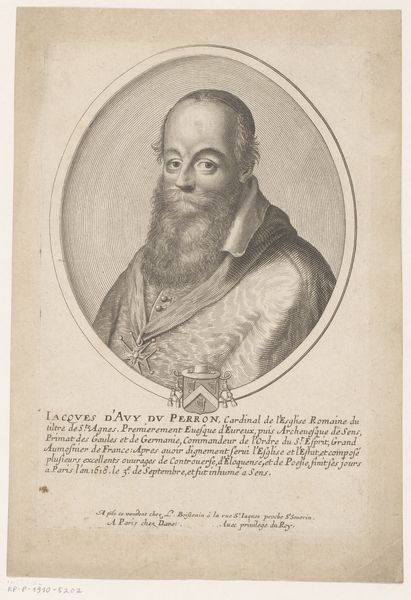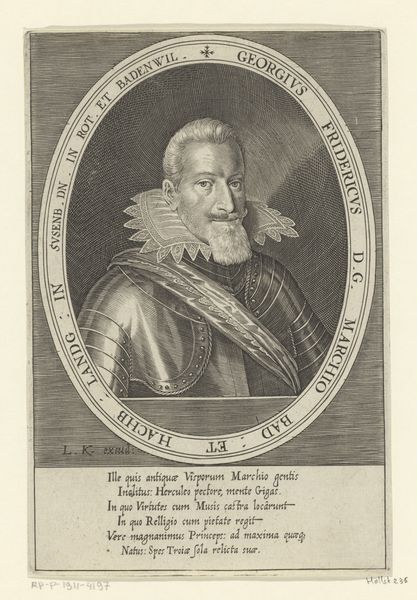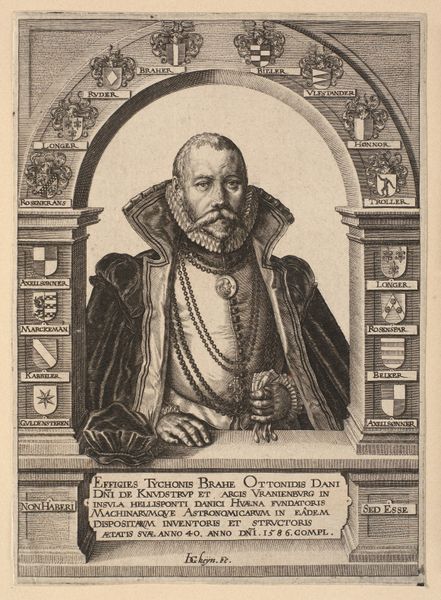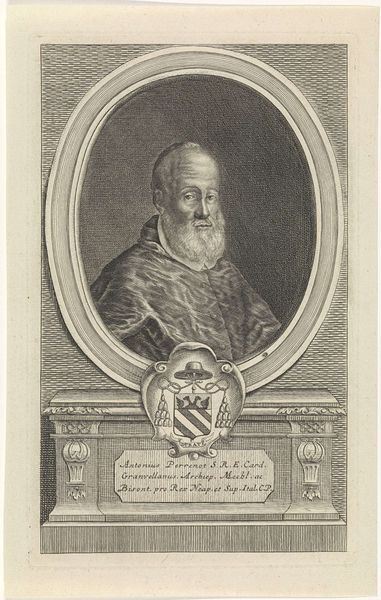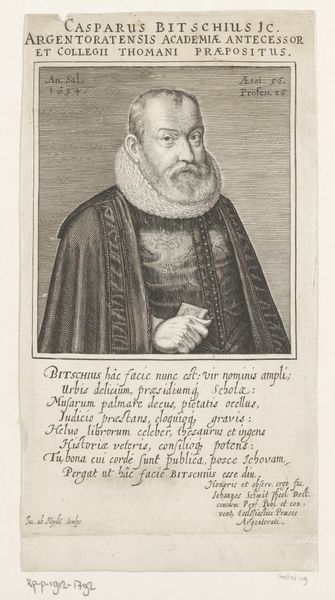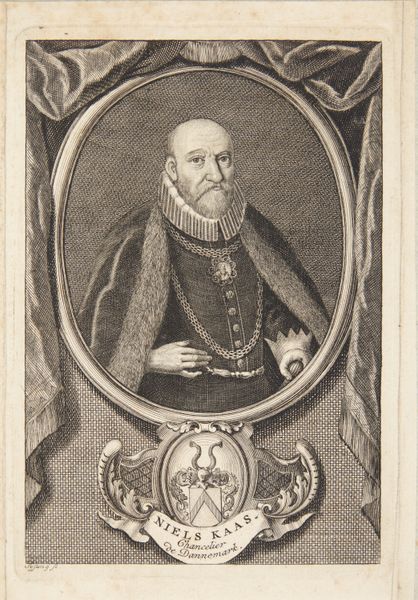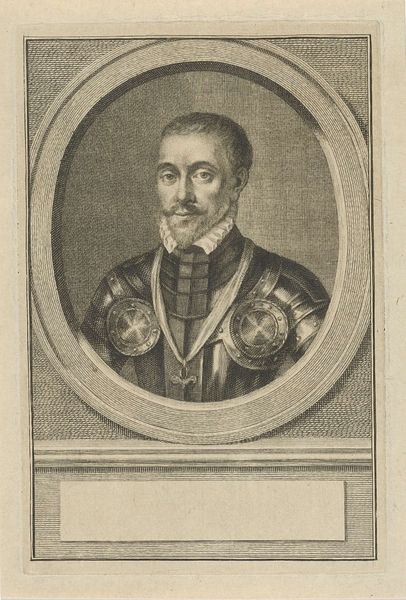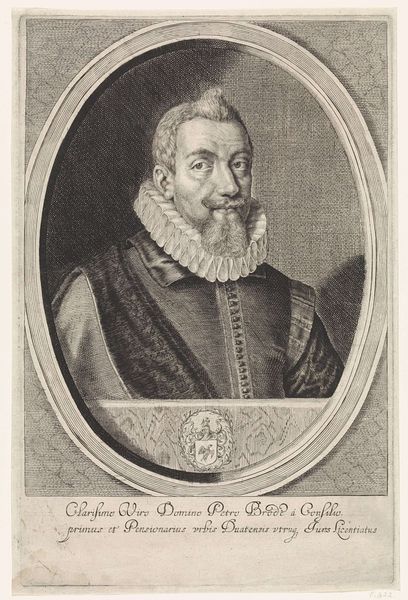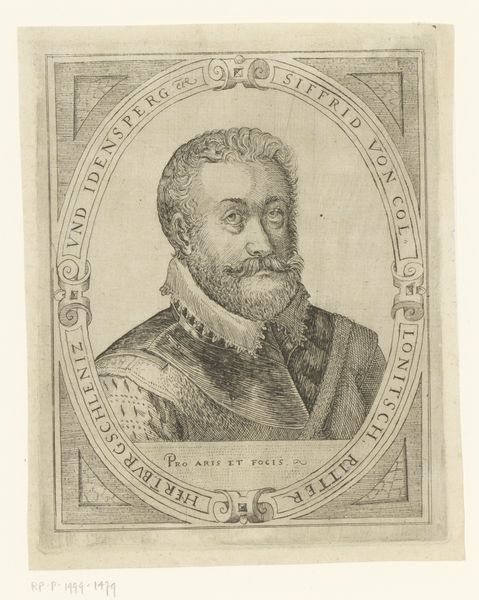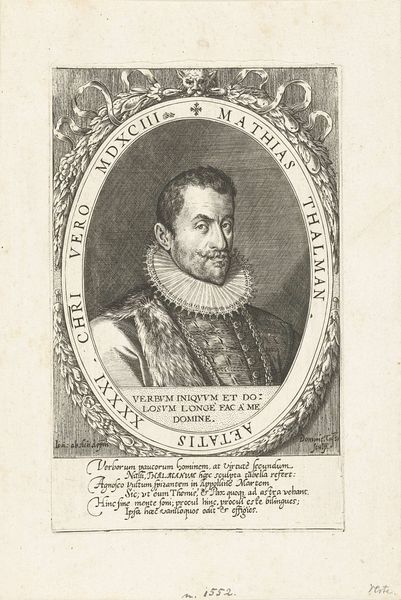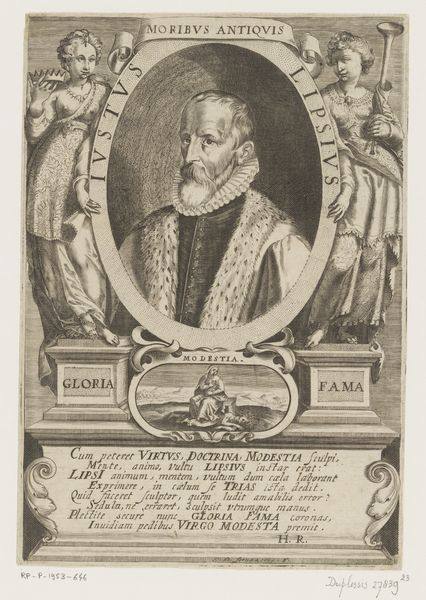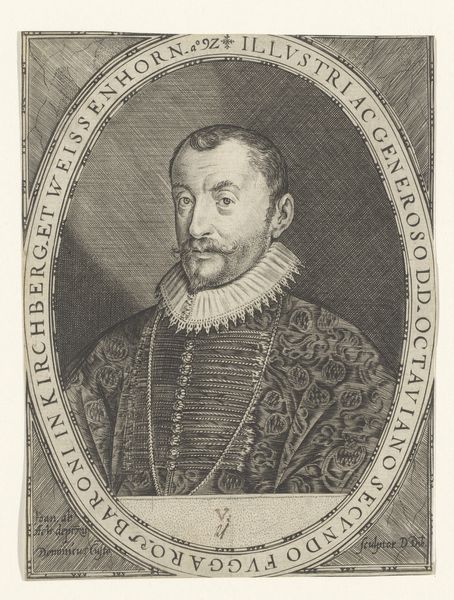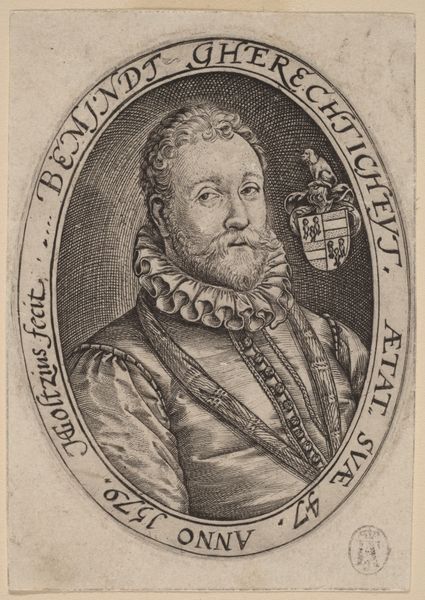
print, engraving
#
portrait
#
aged paper
#
baroque
# print
#
old engraving style
#
figuration
#
line
#
history-painting
#
academic-art
#
engraving
Dimensions: height 192 mm, width 127 mm
Copyright: Rijks Museum: Open Domain
Editor: So, this is "Portret van Jean Pierre Camus," an engraving created between 1652 and 1656 by Pierre Daret, currently residing in the Rijksmuseum. The first thing that strikes me is how… stern the subject looks. He's definitely making eye contact with the viewer, giving it a sense of authority. What's your read on this, given the period and the subject matter? Curator: You've hit upon something essential—the portrait certainly exudes authority, doesn't it? For me, the appeal is the tension created by its apparent plainness; a stark contrast with the Baroque period, when opulence and dramatic flourishes were, let’s say, rather fashionable. Do you notice how Daret avoids any overly decorative elements? No sweeping draperies or grandiose landscapes, just Camus, the text beneath the portrait, and, well, those incredibly subtle gradations achieved solely with the lines of the engraving, which hint at more than just surface likeness. Editor: Definitely! There's a deliberate choice being made here. Was this perhaps to underscore his, what does the text say?, his humble virtues or something? Curator: Precisely! Think about Camus’ position in the church and society; but then also think about Saint Francis de Sales—also in the inscription below—who really espoused a sort of personal devotion. I think Daret is drawing that humility forward in this image by removing visual spectacle. Instead, the image provides a reflective character study; what kind of feeling do you get from that long beard and penetrating stare? What stories do they tell? Editor: That's a great point! The gaze suggests intelligence, piety, maybe even weariness. It makes the figure more human, I suppose. I initially focused on the sternness, but I now also see an intellectual curiosity in his eyes. Curator: Exactly! It’s in that very contradiction that the artwork reveals something profound about Camus and, perhaps, the shifting cultural landscape of the time. And how Daret, I think quite subtly, reveals these attributes through only the technical execution of lines is just fantastic! Editor: I can see it now. Thank you. I'll certainly never look at a Baroque portrait in the same way again!
Comments
No comments
Be the first to comment and join the conversation on the ultimate creative platform.
